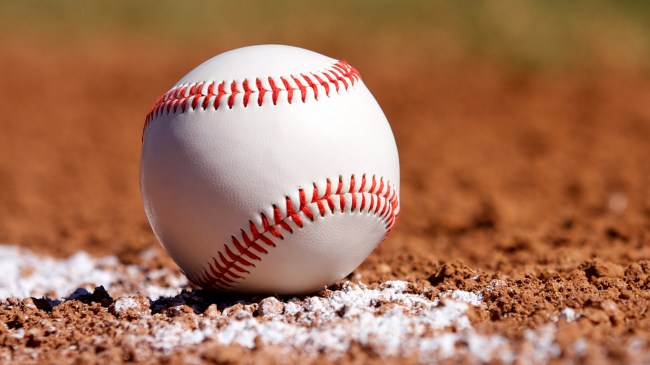
Getty Image
Thousands of professional baseball players left that job behind to fight for the United States during World War II, but that’s not the only connection the sport has to the conflict thanks to some of the grenades that were developed for combat.
More than 16 million Americans were either drafted or enlisted after the country entered WWII in the wake of Pearl Harbor, and men from all walks of life abandoned their livelihoods in order to contribute to the cause.
The MLB considered suspending operations thanks to the more than 500 players (including Joe DiMaggio, Ted Williams, and Stan Musial) who would ultimately fight for their country on top of thousands of minor leaguers (a list that boasts Yogi Berra and Warren Spahn) who did the same.
However, it ultimately opted to find replacements after Franklin Roosevelt sent a letter to the commissioner urging the league to power through in the interest of national morale.
The United States military was obviously inundated with millions of recruits who were subjected to a crash course in tactical training and needed all the help it could get when it came to minimizing the learning curve—a reality that led to one organization dreaming up a fairly ingenious solution courtesy of America’s Pastime.
The U.S. military used baseballs as the basis for the design of some of the grenades that were used in WWII

iStockphoto
I’m going to assume the vast majority of people reading this aren’t experts in military history, but if you are, you likely know the standard issue grenade the United States used during WWII was the Mk 2, dubbed the “pineapple grenade” due to its shape and texture.
However, that wasn’t the only grenade that was deployed in combat, as the military-industrial complex invested plenty of time and money into designing and manufacturing a wide variety of armaments with the potential to give troops an advantage.
In 1944, the Office of Strategic Service (the precursor to the CIA) linked up with the Army Ordnance Department and the folks at the Eastman Kodak Corporation (yes, the film company) to whip up a new grenade that was dubbed the “T-13.”
The spherical ordinance had a circumference of nine-and-a-half inches and tipped the scales at close to five ounces, which just so happens to be the exact specifications of a standard baseball.
That wasn’t a coincidence, as the OSS came to the conclusion most Americans already had plenty of practice when it came to throwing a baseball, which meant they theoretically wouldn’t have much trouble adjusting when it came to tossing the grenade.
I’d love to tell you the grenade (which was nicknamed the “BEANO”—inspired by the baseball term “beanball”—because it exploded on impact) helped to turn the tides in America’s favor, but that didn’t turn out to be the case.
The T-13 had a notoriously unreliable fuze that struggled in cold weather and a tendency to blow up prematurely, which isn’t a feature you look for in something handed out to soldiers. While it was reportedly distributed to some of the troops tasked with storming Normandy on D-Day, its production was discontinued in 1945.
With that said, the military harnessed a similar philosophy during the Vietnam War when it adopted the M67, which weighs 14 ounces but is still commonly referred to as the “baseball grenade” thanks to its nearly identical shape.